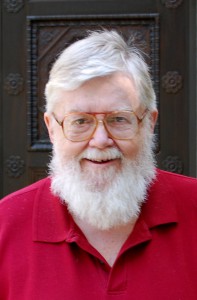 On a recent trip to Salt Lake City, I took along a list of questions to work on. I hoped to demonstrate directly that Alexander Nowell, the prominent English Puritan, actually had interactions with his grandnephew, Increase Nowell of Charlestown, Massachusetts (1593-1655), who was about nine years old when Alexander died in 1602. My first step was to locate and read Alexander’s will.
On a recent trip to Salt Lake City, I took along a list of questions to work on. I hoped to demonstrate directly that Alexander Nowell, the prominent English Puritan, actually had interactions with his grandnephew, Increase Nowell of Charlestown, Massachusetts (1593-1655), who was about nine years old when Alexander died in 1602. My first step was to locate and read Alexander’s will.
There was nothing there about Increase, but the will included a lengthy codicil dedicated to the estate of John Deane of Great Maplestead, Essex. In 1585, Alexander was appointed guardian to young John, who was born about 1583. At the time of Alexander’s will, about twenty years later, John would have just reached his majority. I think I must have read Alexander’s will many years ago, but this connection had not then meant anything to me.
The importance is that John Deane was the older half-brother of Margaret Tyndall, who in 1618 would become John Winthrop’s third wife. This marriage took place more than ten years after Alexander Nowell’s death, but an early history of Great Maplestead says that Alexander used to spend his summers at Great Maplestead with the Deanes and Tyndalls in the 1590s. I think I can make a good case that once John Winthrop had the Great Maplestead connection, following his marriage in 1618, he heard many stories about Alexander Nowell, and that the connection with Increase Nowell may go back farther than we had thought.
My proposed book title employs the word pedigrees in two senses, with regard to biological and to intellectual ancestry; in other words, the strands of continuity in Puritan thought that parallel and are intertwined with the family links. As you can see, deep roots and Puritan pedigrees.
Robert Charles Anderson’s new book is tentatively entitled Puritan Pedigrees: The Deep Roots of the Great Migration to New England.
Mr. Anderson, I like your train of thought, moving through the intertwined and albeit parallel lines of biological and intellectual ancestry. It seems a novel approach to research, and one that may reveal more than one would ever expect to find. Kudos to you for this approach ~ and best wishes on your search.
J. Record
The Nowell name caught my attention. I too have noticed sometimes ‘odd’ connections in famiies – seldom as deep as yours but interesting none the less. For example, in my family, my parents famiies couldn’t have been more different – in behavior, temperment or history, yet ………
Interesting that we have the Nowells as ancestors to Mom’s side of the family (Hazelton) and Newells as ancestors to Dad’s side of the family (Strang)
The Nowells were from Yorkshire county while the Newells were from the Suffolk and Oxfordshire counties of England.
As interesting, another quirk of genealogy, we have two separate Fowler families as ancestors.
The Fowlers that originated in Rutland and Buckinghamsire Counties of England were progenitors of Dad’s ‘Strangs’ while the Fowlers of Wiltshire county are ancestors of Mom’s Hazeltons, therefore contributing to both sides of my Parents like the Newell/Nowells above.
Might as well keep going with the Shepheards and the Shepards. Through the Wentworths & Walkers and others the Shepheards came down to the Nowels and Gilmans while the Shepards came down through the Pierce side to become Hazeltons – contributing to both sides of my Grandparents
connections are where you see them.Keep on being aware!
Christopher
Just as an aside, Increase Nowell’s baptism record – 19 August 1593 at Sheldon, Warwickshire where his father Alexander, son of Laurence Nowell, Dean of Lichfield, had settled – is one of the very first recorded instances of the use of Increase as a first name. I have found one earlier instance – 1591 – in the parish register of Heathfield, Sussex. The first name never caught on in England, where it has always been almost vanishingly rare. It was in colonial New England that it came into somewhat wider use.